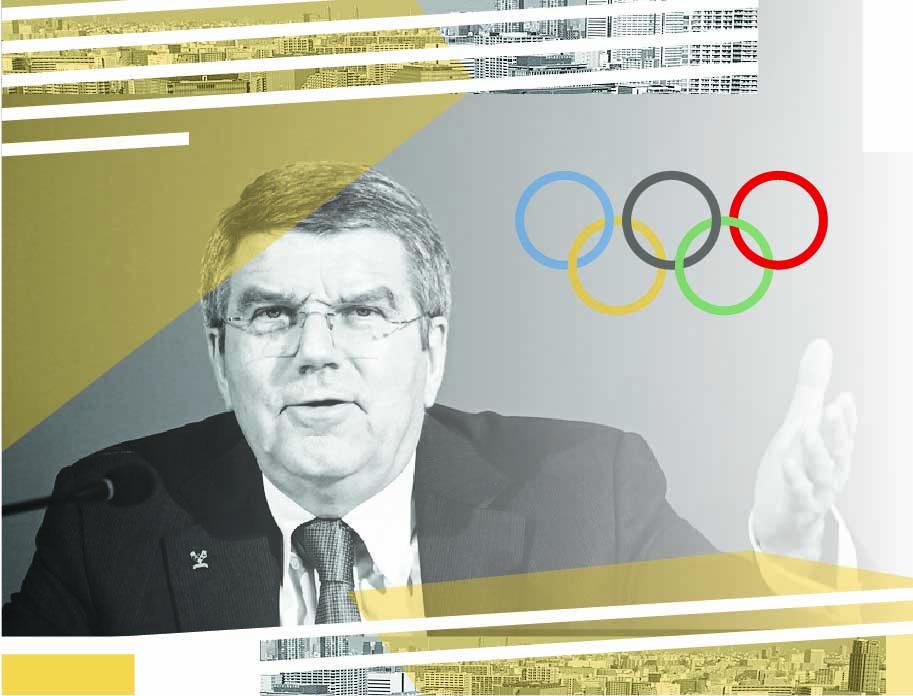
Prof Susanna Hedenborg
Professor in Sport Sciences, Malmö University, Sweden. Hedenborg’s research focus is history, children and youth sport, gender and equestrian sport.

Dr Aage Radmann
Associate Professor in Sport Sciences, Norwegian School of Sport Sciences, Norway. Radmann’s research focus is sport sociology, media, sport fandom and masculinity.

Section 2: Media Coverage & Representation
- Twitter conversations on Indian female athletes in Tokyo
- ”Unity in Diversity” – The varying media representations of female Olympic athletes
- The Olympic Channel: insights on its distinctive role in Tokyo 2020
- How do we truly interpret the Tokyo Olympic ratings?
- Between sexualization and de-sexualization: the representation of female athletes in Tokyo 2020
- Reshaping the Olympics media coverage through innovation
- An Olympic utopia: separating politics and sport. Primary notes after analyzing the opening ceremony media coverage of mainstream Spanish sport newspapers
- What place is this? Tokyo’s made-for-television Olympics
- The paradox of the parade of nations: A South Korean network’s coverage of the opening ceremony at the 2020 Tokyo Olympics
- Tokyo 2021: the TV Olympics
- Why we need to see the “ugly” in women’s sports
- “The gender-equal games” vs “The IOC is failing black women”: narratives of progress and failure of the 2020 Tokyo Olympics
- Ghana: Poor local organizing, and absence of football team dampens interest
- Megan Rapinoe: The scary Bear for many Americans?
- ‘A Games like no other’: The demise of FTA live Olympic sport?
- Temporality of emotionalizing athletes
- Fandom and digital media during the Tokyo 2020 Olympic Games: A Brazilian perspective using @TimeBrasil Twitter data
- Media wins medal for coverage of athletes as people, instead of entertainers
- Media frames and the ‘humanity’ of athletes
- Reporting at a distance. Stricter working conditions and demands on sports journalists during the Olympics
- New Olympic sports: the mediatization of action sports through the Olympic Games 2020 Tokyo
- Simone Biles, journalistic authority, and the ideology of sports news
- Representations of gender in the live broadcast of the Tokyo Olympics
- Americans on ideological left more engaged in Summer Olympics
- Nigeria: Olympic Games a mystery for rural dwellers in Lagos
- National hierarchy in Israeli Olympic discourses
- Reshaping the superhuman to the super ordinary: The Tokyo Paralympics in Australian broadcasting media
- Is the Paralympic Games a second-class event?
- The fleeting nature of an Olympic meme: Virality and IOC TV rights
- Tokyo 2020: A look through the screen of Brazilian television
- Is the Paralympic Games a second-class event?
- How digital content creators are shaping meanings about world class para-athletes
- How digital content creators are shaping meanings about world class para-athletes
- The male and female sports journalists divide on the Twittersphere during Tokyo 2020
- Super heroes among us: A brief discussion of using the superhero genre to promote Paralympic Games and athletes
- “Everything seemed very complicated”: Journalist experiences of covering the Tokyo 2020 Paralympic Games
- Representing high performance: Brazilian sports journalists and mass communication professionals discuss their philosophies on producing progressive Paralympic coverage
- Representations of gender in media coverage of the Tokyo 2020 Paralympic Games
In the Tokyo Olympic Games 2021, the Swedish team in equestrian jumping won a gold medal. The endeavor was praised in Swedish mainstream media and the team was described as “winning an Olympic gold medal for everybody in the sport”, a “historic triumph – all sports included” and in terms of that everybody in Sweden now were part of the “equestrian cult”. The coverage is possibly not surprising. The team won a gold medal – and research has shown that gold medalists receive extra attention. Even so, it is interesting as contemporary equestrian sports are generally receiving little attention in mainstream media and are often described as a hobby for young girls, rather than sports.
Up until the end of the nineteenth century, horses and riding were associated with masculinity and men’s work. Horses and men worked together in agriculture, forestry in the transport sector and in the army. Cavalry officers comprised the majority of those competing at the racetracks and in other equestrian competitions. In Sweden today – and in contrast to many other countries – horse riding is one of the most popular sports for children and young people and the Equestrian Federation is one of the top ten sport federations in terms of activities, the number of membership associations, and individual members. A majority of riders are girls and women. We argue that the development can explain changing media coverage.
In the Stockholm Olympic Games in 1912, the current equestrian disciplines (dressage, show-jumping and eventing) were included for the first time. At that time only “gentlemen” riders, as determined by the equestrian federations in their respective nations, were allowed to compete and women and non-commissioned officers were excluded from the competitions until 1952 (dressage), 1956 (jumping) and 1964 (eventing). In the 1912 games, ten countries competed and Sweden won the gold medal for the team event. The Swedes continued to show their strength and won gold medals in the team event in 1920 and 1924 too. In the media coverage of these early Olympic games the riders, officers in the Swedish army, were proudly presented. The equestrian events were given attention and described in similar ways up until the games in 1956, in which a Swedish non-commissioned officer won a gold medal in eventing.
Over time the number of competing nations has increased in equestrian sports in the Olympics, and so has the number of women athletes. The top nations have been Germany, Sweden, the United States, and France. Despite this, equestrian sports have barely been covered in Swedish media and the question of whether equestrian sports are real sports has been debated. The questioning can be exemplified with a discussion following Rolf-Göran Bengtsson and his horse Ninja La Silla winning a gold medal in the EC in jumping in 2011. The year after he won the Swedish Jerring Award – a prize instigated by the sport section of the Swedish Radio. The award is named after a Swedish radio personality, Sven Jerring, and is given to a Swedish athlete elected by the radio audience. It is counted as the finest sports prize as it is ‘the prize of the people’. In the time that followed, a media debate on whether equestrian sports were real sports followed. In a chronicle in the tabloid paper Aftonbladet, the sport journalist Lasse Anrell wrote “Who the heck is Rolf Göran Bengtsson?” and suggested that the prize should be given to the horse instead implying that the award was given to a care taker of the horse rather than a real athlete. Anrell was one of the most prominent sport journalists in Sweden at that time, and had, except numerous articles, written more than 40 books that had been translated to over 15 languages. His articles were often referred to and came to form the agenda for the Swedish sport-discussion. His chronicle about Bengtsson started a discussion about equestrian sports in Sweden. Several other media voices underlined that to ride a horse was a strenuous as sitting in a couch. In addition, journalists suggested that the Jerring Award had been subjected to a ‘voice coup’ from young girls – not real sport fans. The initial discussion pointed to how sport journalists dismissed equestrian sports as real sports, but riders all over Sweden protested openly and suggested that sport journalists overlooked horse riding for sexist reasons. It was stated that equestrian sports had been marginalized in traditional media, not least by male sports journalists lacking (like many men at this time) experience of horse riding.
Anrell was subsequently challenged to try horse riding on one of the Swedish horse-riding schools. The experience made him change his statement. Arnell’s chronicle can be seen as a turning point for media coverage of equestrian sports. Increased appreciation of women’s sport and the digital transformation of media are others. There are several social media platforms and influencers covering equestrian sports on elite and grassroot levels reaching riders of all ages. As horse riding is a popular leisure time activity for these readers, the media landscape may be about to change. A sign of this is possibly the headings and articles following the gold winners in Tokyo. The coming years will show us whether the change sustains.

